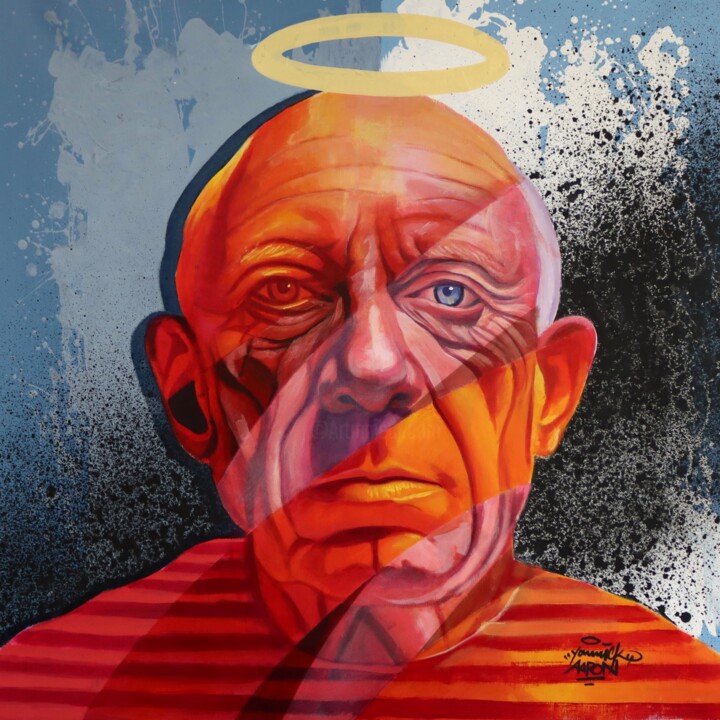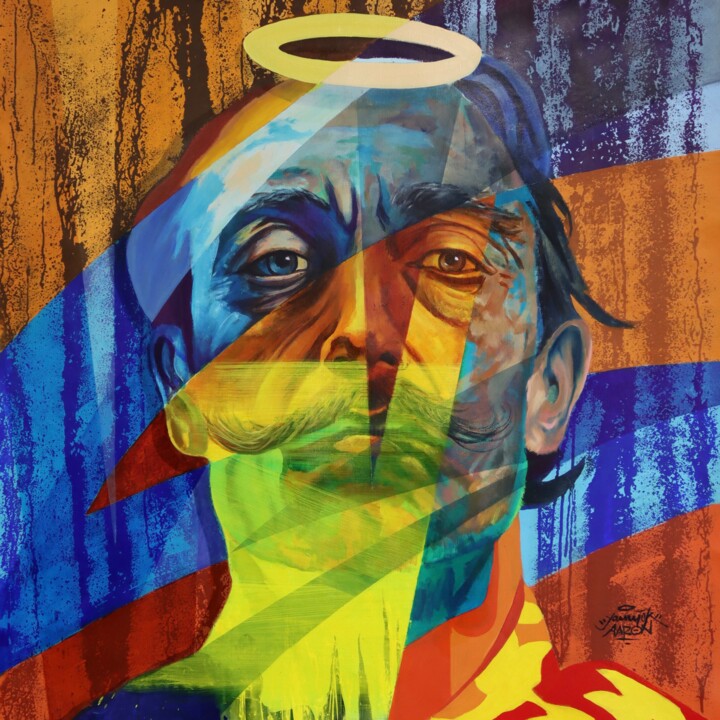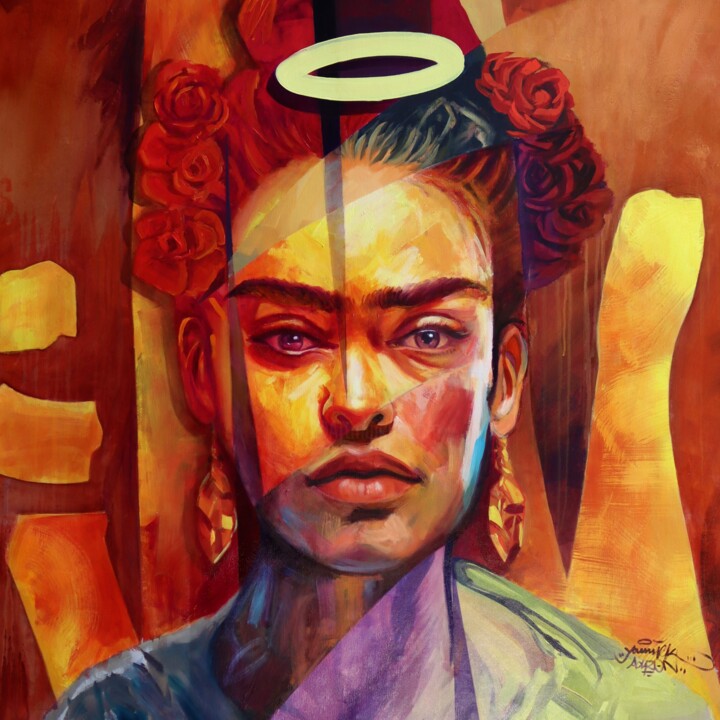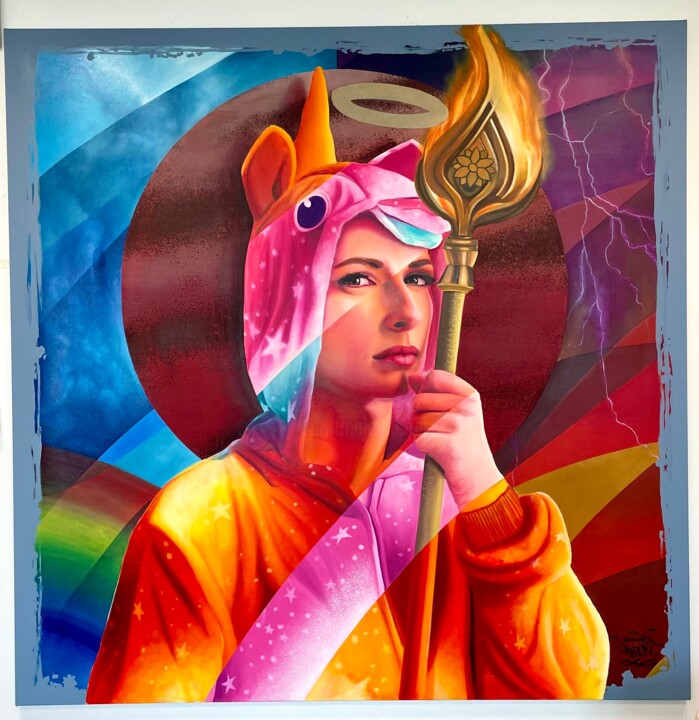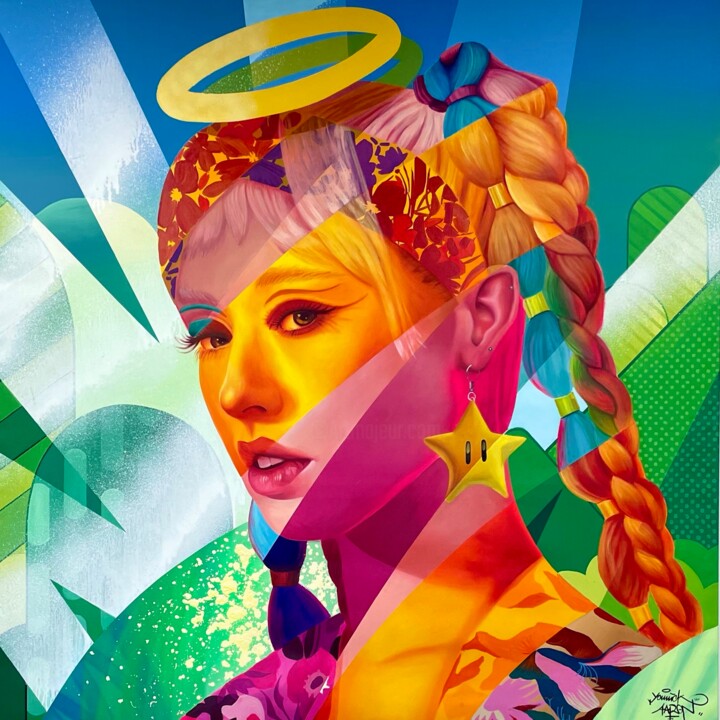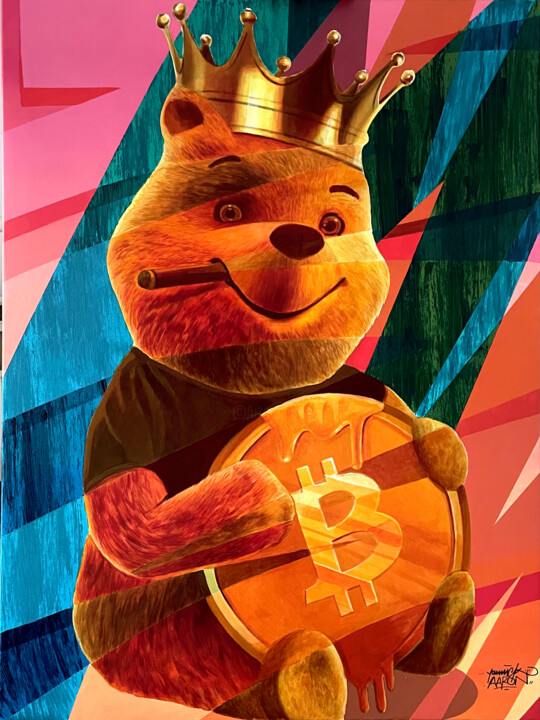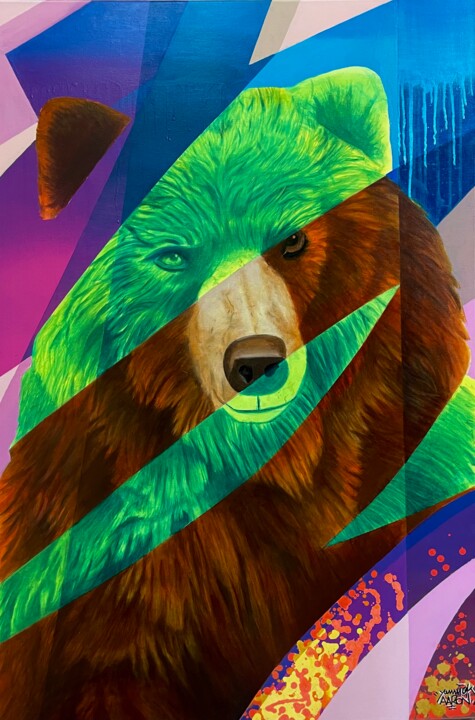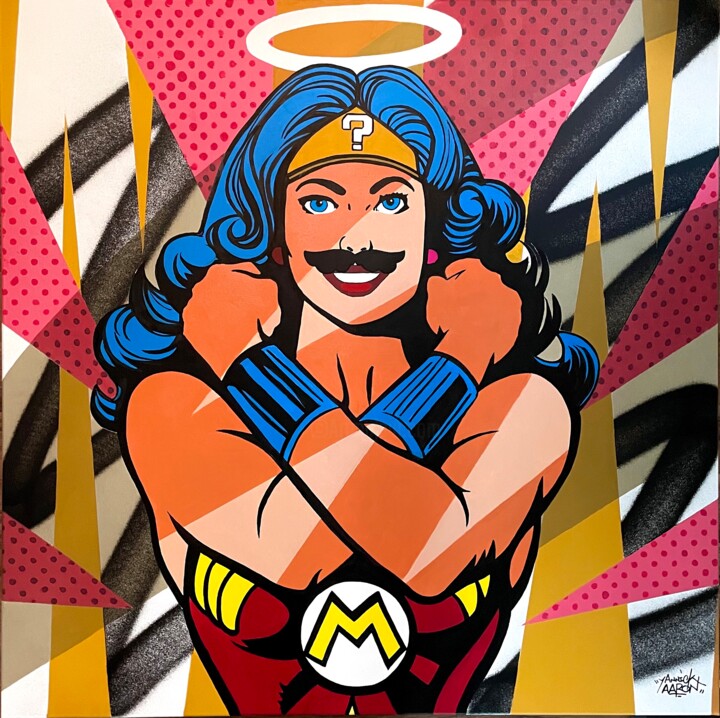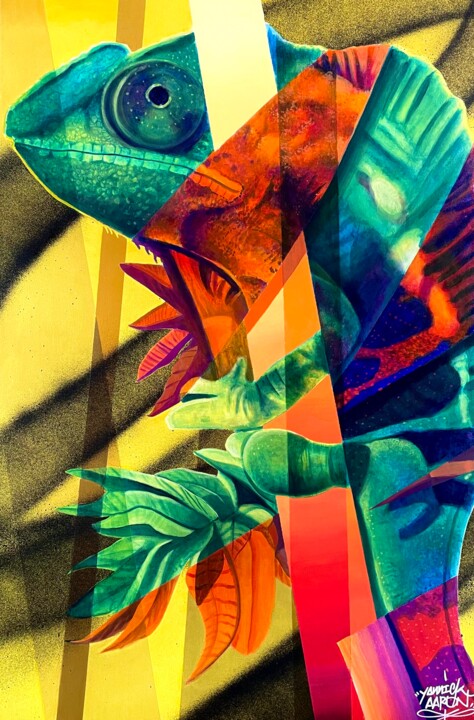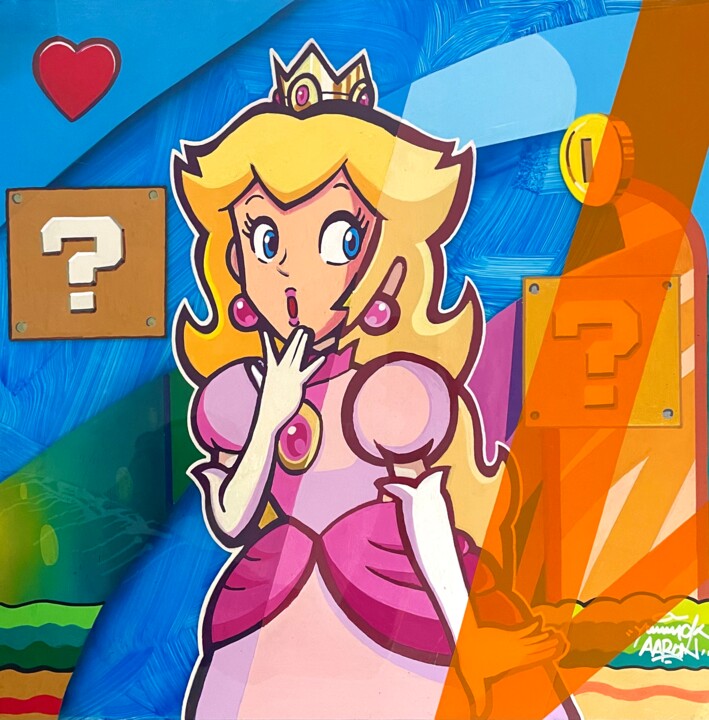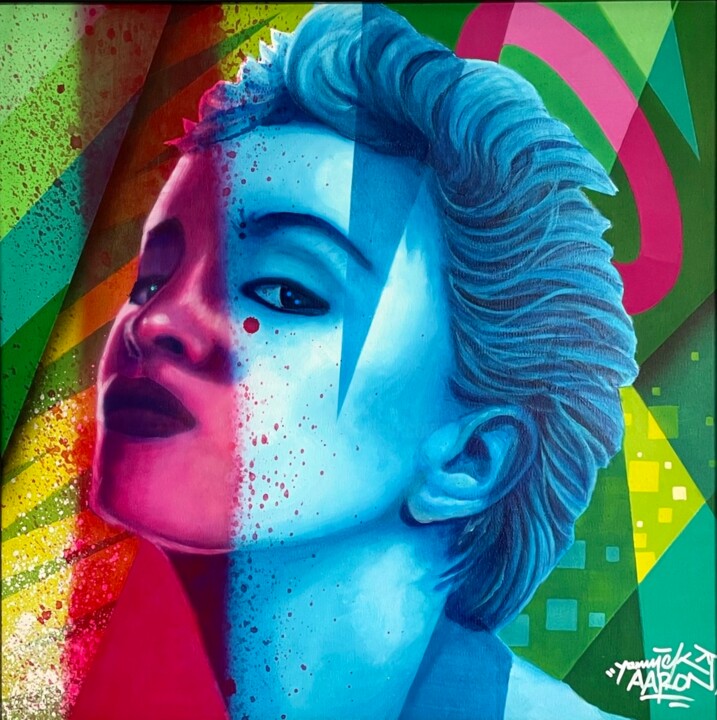What inspired you to create artwork and become an artist? (events, feelings, experiences...)
I think that everyone comes into the world as an Artist, as soon as we have the opportunity, we start to construct, and to deconstruct, it's the same process. For my part, it was the same thing, I remember your little one playing Lego continuously, that day of construction, I had the constraint of not having many toys and I had to create them to be able to have fun. Later, as a teenager, a friend suggested that I go see a piece of graffiti in an empty lot, it was at that moment that I came across a real piece of graffiti which had been created with a little more time than those which could be made on the railway line for example, I immediately wanted to do some too. there was in this act of making graffiti, the rebellion of adolescence, the adrenaline, the escape, subverting the rules of society to achieve one's ends in this case it was the fact of sneaking into forbidden places to to be able to create my graffiti as efficiently as possible, all this was already in my character, combined with the Hip Hop movement of the time that I had just discovered, and this need continues to create, for me everything was there for me to fall into it then I started making my own creations on the wall, most of the time illegally, then more and more until I was only doing that instead of going to class sometimes. I then discover that all these graffiti have a meaning, that there are codes, that all graffiti artists each have their own group, I meet other graffiti artists in wastelands and from there I develop an obsession that will never stop, mixture of vandalism in an organized gang but always with the artistic approach of developing the emotion of the spectator and it is not just contemplation, it was necessary to shock the populace in an impertinent way with paint, to make the biggest tags, the biggest Graff, a maximum, always, all the time.
What is your artistic background, the techniques and subjects you have experimented with to date?
I started graffiti in 1997, at that time I painted a lot of large letters several tens of meters long on the railway tracks generally, a lot of indelible dripping tags in the RER interiors of the Parisian suburbs, my work that I carry out full time but who is not paid is then focused on the degradation of public property, and the impact of graffiti on the urban environment, which can be very complex and ambivalent, as well as on the ambiguity of the relationship between degradation due to graffiti and, or, the embellishment that it can bring, I am constantly looking for this subjective limit between good and evil, or the emotion of the spectator who will react to a graffiti, a negative emotion then having for me as much impact as a positive emotion, I painted in the street until 2011 when I began to enter working life, at that time I developed a technique mastered with the aerosol spray which allowed me to create increasingly detailed murals, unemployed for a few months, several friends asked me to create murals in their rooms or gardens, and from one of these orders I decided to create a website with the aim of offering a service for creating custom murals a theme, the idea is as follows, the client gives me a theme, I compose the model of the project with a photomontage then I go directly to the client to create the previously defined wall fresco. At the beginning my customers were mainly made up of individuals for children's rooms, then a few years later companies joined the trends, I then spent all my time traveling all over Europe to honor my order book, it was then about Thematic commands which allow me to develop my technique on walls, mainly with aerosol sprays, but which remain fairly framed with specifications to respect, I then begin to be bothered by requests that are too framed, most of the time these constraints are given by people who are decision-makers in the company but who have never had artistic experience, who do not paint and who decide for the company solely through their personal tastes, this affects me more and more and I start to think to create my own creations on paintings, unfortunately the more I think about it, the more I run out of time because my order book is filling up more and more. until 2020 or thanks to covid I was able to breathe and finally started creating my own works. Working on paintings is completely different from that on walls, on large surfaces, the aerosol can is very effective because it allows you to opaquely cover a very large surface, however the size of the line is limited, you will never be able to have the size of a hair with an aerosol can, it is precisely this characteristic which is its weak point on a smaller sized painting. I then decided to learn the techniques of acrylic painting, I looked at the different types of brush, different types of paint, I learned to be familiar with opacity, to make colors, {ce dont je n avais pas besoin avec les bombes aérosols car chaque bombe a sa couleur} I discovered the technique of acrylic glazing then later I moved on to oil painting, I learned the technique of Fat on lean, washes, turpentine, oil mixtures , the different solvents too. My technical work is then based on the use of geometric shapes reminiscent of the movement and the power of a tag, associated with transparency effects of chromatic variations, the subjects are diverse but often go through the sublimation of the Woman, I personalize these portraits to make them sort of icons, the transparency effects allow us to translate an unreal vision of the subject, the play of colors brings dynamism and the transcendent side of the works, I can also sometimes come to more popular subjects or social subjects which I represent in an icon.
What are the 3 aspects that differentiate you from other artists, making your work unique?
My priority is the search for excellence, that is to say mixing something and its opposite, and finding harmony to obtain something new, passionate about mixtures and contrasts, I often mix in my works , classic painting, and graffiti, order, and disorder, dripping paint, and very clean flat areas, areas of shadow and light, complementarity, so that we no longer really make the distinction between what is beautiful or ugly, a bit in the same way as my first graffiti.
A second aspect that differentiates me is the use of chromatic filters as I call them to give dynamism to the composition, they make my compositions recognizable at first glance and are a reflection of the society in which we live, they are a kind of flashes of light, everything goes so fast these days, we only see snippets of everything, even in music there is no longer really a story but just snippets of sentences put together to make an imaginary visual effect relevant, this process that I uses is perfectly in tune with the times.
The use of symbols as a pattern, we often find floral motifs, pixels, the arch of the angel which reinforces the visions that I represent in my paintings, they allow us not to make a work too ambiguous, it is always necessary that the spectator clings to something he knows.
Where does your inspiration come from?
I am passionate about different cultures, contrasts, I find it interesting to see how to bring into harmony 2 things which at first glance are so different, I think that my inspiration comes from there, I try to bring out these contrasts in my paintings.
What is your artistic approach? What visions, sensations or feelings do you want to evoke in the viewer?
I mainly create unrealistic visions, the sensations that I seek to evoke are transcendence, power, contemplation, dynamism but in a positive energy, much less dark than the one I had as a teenager in my graffiti years, I think that the intensity remains the same, it’s just not the same frequency, it’s normal, I’ve grown, I’ve evolved.
What is the process of creating your works? Spontaneous or with a long preparatory process (technique, inspiration from art classics or other)?
Generally, I try to put the ideas down on a notepad first, visualize the subject and the colors. Then, most often using my tablet, I create the composition of the project. It allows me to see how the elements in the composition will be rendered at first glance, which is interesting with this technique, and which can be modified. directly the project with a single click, whereas at the time, it was necessary to redesign the entire project completely, once the Project is ready, I paint it, obviously, I am not restricted, I use it as a base , which I complete over the days according to my inspiration.
When I lack inspiration, sometimes I consult works that I have in my possession, perhaps for example works which talk about color harmonies, or which talk about work, color, or inspirations from other artists, I can also go see an exhibition for example, and get inspired by it or there is also Instagram which is a real visual gold mine, previously, in the 90s, when we wanted to see new paintings, we had to move around and look for the vacant lot in which there was graffiti, we sometimes had to travel several hours on the RER to see if a new wall had been repainted since last week, sometimes it hadn't changed, we turned around empty-handed, the graffiti was poorly received and was not distributed anywhere, no one saw the point. today, you can even scroll with your thumb on a wall that was made in Los Angeles by a certain artist, a thumbs up further you are in Germany in an artist's studio, half a second further you are in Paris at the basquiat exhibition, of course it doesn't replace the slap you might get when seeing the work in real life but it has the merit of at least inspiring other artists.
Do you use a particular working technique? if yes, can you explain it?
What I like the most is the glaze, a glaze is a thin layer of transparent paint, applied to an already dry layer of paint. It is used to create transparency, depth and color effects in a work of art. Glazing allows you to create subtle shadows and highlights; by applying a transparent glaze, an artist can soften transitions between colors, create subtle shades and make shadows deeper. Since it is a transparent coat, it helps to increase the luminosity, the transparent glaze allows light to penetrate and reflect through the layers of paint thus creating a shine effect. Glaze effects also allow you to adjust the color or tone of an already painted area, without completely covering the existing layer. It's a technique that I didn't know during my years of graffiti but which really adds a new dimension to the works.
Are there any innovative aspects in your work? Can you tell us which ones?
I will say the mixture of projection techniques with classic oil painting techniques for example, I could not reveal everything to you but sometimes, only a trained eye, or a connoisseur of painting techniques will be able to notice these innovative effects, sometimes, you just have to look at how the layers are arranged between them and imagine what has been done below or above to understand that it is not that simple, for example, how to make a color gradient in a projection in fine droplets paintings...
Do you have a format or medium that you are most comfortable with? if yes, why ?
Given that I started directly from the very beginning to paint very large walls, I am more comfortable with this format I had a lot of difficulty getting used to the small formats on Paintings, not only the size changes, but also the tools needed to create these works were different, it’s really another world. I also appreciate the square format, it is a hybrid format halfway between the rectangle and the portrait, you can both work on a landscape in the background and make a portrait without hindering the reading.
Where do you produce your works? At home, in a shared workshop or in your own workshop? And in this space, how do you organize your creative work?
I produce the majority of my works in my studio in Poznan, Poland, where I have lived for several years. It's a real organizational change for me, because before I was always on the road doing murals. Having the studio here allows me to create the works directly in the studio, then send them all over the world, when they are sold or for exhibition in galleries. It allows me to really focus only on the work, whereas on a mural project, there is the whole logistical part to take into account, the travel, the preparation of the material, the reservation of the hotel to sleep, the time limited to create the mural, and all incidents to manage on construction sites. I also continue to do mural tours, but they are spaced out more frequently as I am focused on studio work. Dance, the Jorga Niese space, my creative work in the following way. There is a part with a computer, a graphics tablet and an iPad so that I can carry out projects for the next works. Then there is a part where I cut the canvases and I school them on a work surface so that I can paint them in succession, at the same time, taking into account the drying time of oil paints, I generally works on two to four works. At the same time, it allows me to manage drying times. While one work dries, I paint another and so on, I then take it off its support and spread it on a wooden frame most of the time. There is also a free wall where I can most often hang a large format painting 2 m by 2 m. It's a luxury in a studio, but it allows me to have perspective on my work and it gives me inspiration for the next pieces.
Does your work lead you to travel to meet new collectors, for fairs or exhibitions? If so, what does it mean to you?
I regularly travel with the murals and the different exhibitions, it is always beneficial to see how the works will be perceived by the public. There is always this studio period where we are alone with ourselves, show the mistakes, but we don't really have an opinion, apart from emoticons on Instagram, it's once the work is in the Gallery in front of a real audience, and a sale is concluded that we realize what the work is really worth. Before, we have no idea, and the creation process can sometimes last several months.
How do you imagine the evolution of your work and your career as an artist in the future?
I am confident about the future, I think that with the process that I have implemented on my works, to be able to really master it, it will take me around ten years, as long as the mind remains busy creating there will be no problems. I have great ambitions and I hope to be able to share my work as much as possible throughout the world but especially through time, the fact of painting makes me take into account the value of time. I understand more and more that time is limited and that I will not be able to create an infinite number of paintings.
What is the theme, style or technique of your latest artistic production?
My latest artistic productions were quite an original work, since I created an icon of a woman on the theme of creation and technology, and in the background, I reproduced a star pattern with Lego blocks Made in acrylic, it’s a work that took me a really long time. There are more than 800 acrylic blocks that make up the background of this work, I really like the result, I think I will be able to add more to the series in the coming months.
Can you tell us about your most important exhibition experience?
The biggest exhibition I was able to participate in was the Shanghai art fair, unfortunately I was not able to be physically present there. it was the gallery which represented me in this event which took care of the organization of this exhibition, it was a new and quite enriching experience because it allowed me to see and place several cursors in relation to the current level of the Chinese market , it is very different from the European market, and they do not have the same criteria, nor do they sell them in the same way, I make a lot of large paintings, and they are rather fans of small formats, nevertheless there is a real attraction for street art. this experience allowed me to confirm my beliefs on this subject to be able to adapt in the future.
If you could create a famous work in the history of art, which one would you choose? And why ?
the raft of the jellyfish, because the composition reminds me of the graffiti I was doing at the time, mixed together, like graffiti letters, wild style. In my adolescence, I often went to the Louvre Museum to admire this piece and make small sketches of other paintings, this work inspired many of the Graffs and unconsciously allowed me to make the link between classical painting and graffiti. , it matured in my mind until it gave the style of today.
If you could invite any famous artist (dead or alive) to dinner, who would it be? How would you suggest he spend the evening?
Jean Michel Basquiat for sure, I have a bit of an image of Basquiat as that friend you hang out with in the neighborhood and who doesn't talk much but he's always there and the whites aren't annoying and are even rather comfortable, I think that we would be like that, looking at Graff or his latest paintings, maybe going out and scratching in silence, smoking and drinking, without talking too much, a good friend.

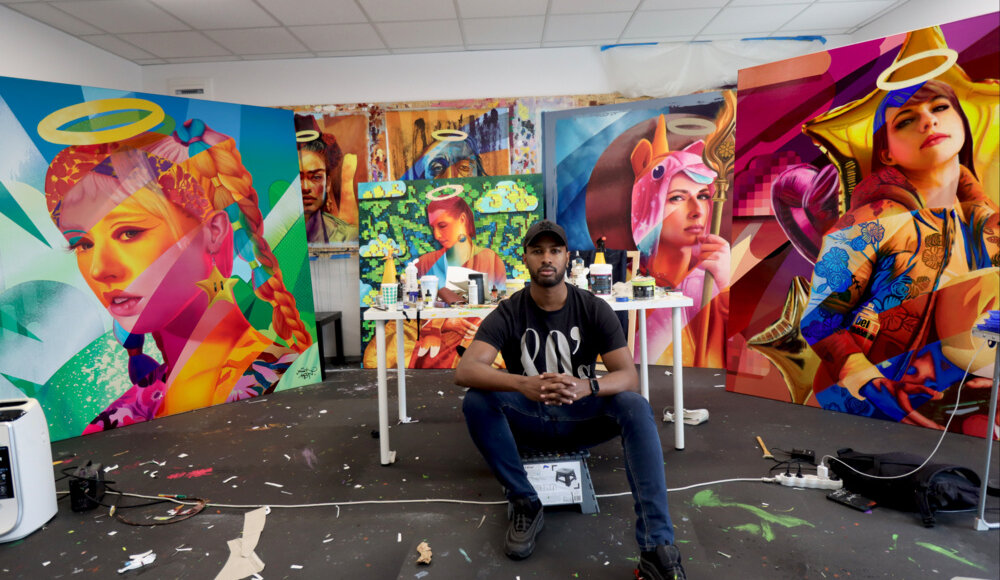

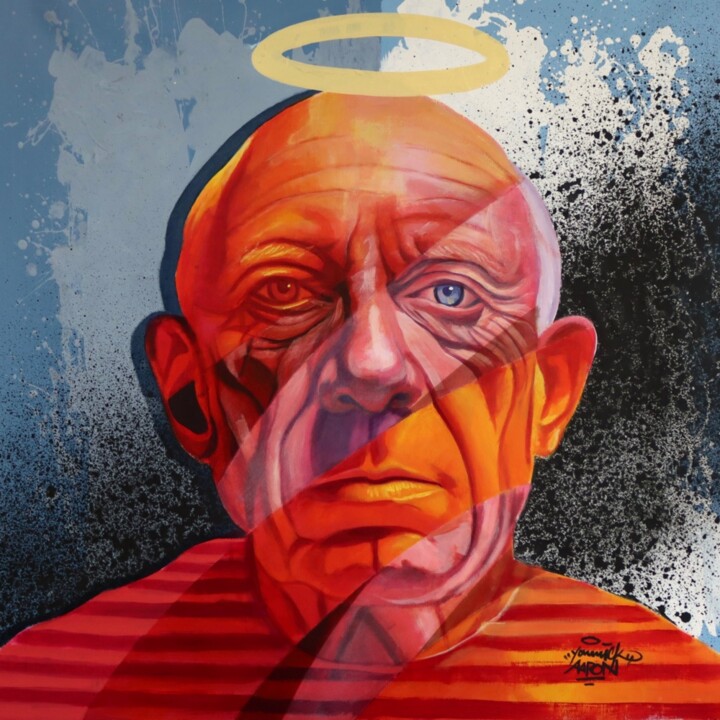

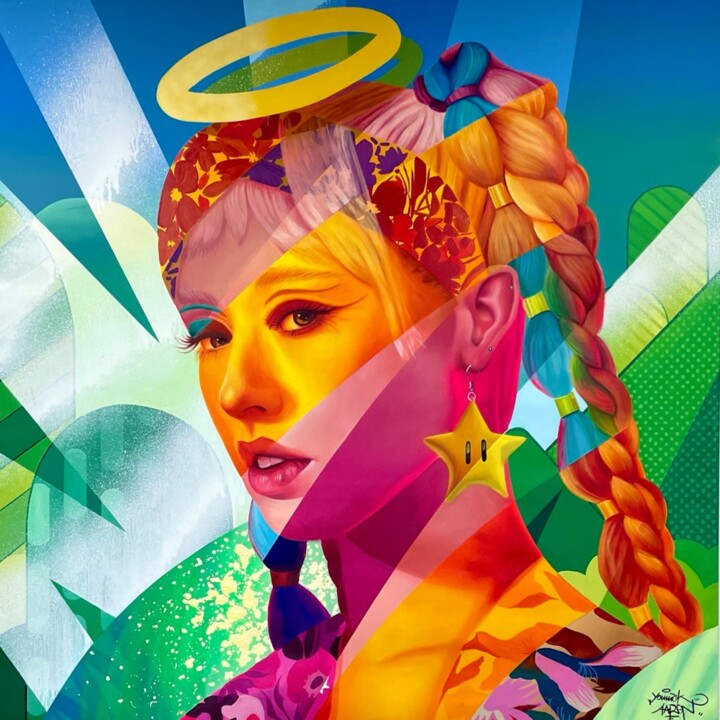


 Olimpia Gaia Martinelli
Olimpia Gaia Martinelli

